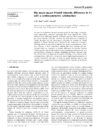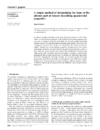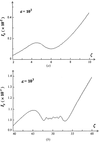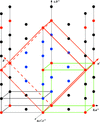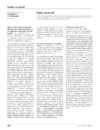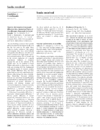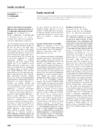issue contents
May 2007 issue

Cover illustration: The molecular form of the guanosine-5'-phosphate tetramer [Zimmerman (1976). J. Mol. Biol. 106, 663-672] has vertices at points of a cubic lattice with parameter a defined by the distance of O6 from the centre. The height is H = 2a and the basis a square scaled by a factor 6 from the central hole. Another square, scaled by 3![[square root]](/logos/entities/radic_rmgif.gif) 2 and turned by 45°, separates phosphates and bases. The indices of the molecular forms are indicated. Courtesy of A. Janner.
2 and turned by 45°, separates phosphates and bases. The indices of the molecular forms are indicated. Courtesy of A. Janner.
research papers
addenda and errata

books received





 journal menu
journal menu














